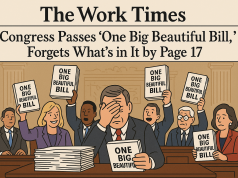[ad_1]
Most of us have heard of the Pareto Principle known as the 80/20 rule that states roughly 80% of the effects come from 20% of the causes.
Examples include:
· 80% of sales come from 20% of the salespeople
· 80% of customer complaints come from 20% of the customers
· 80% of the work is done by 20% of employees
……. and so on. It has been amazing to see, over time, how accurate this has been when analyzing the activities of clients.
Another rule I’ve found to be accurate is a variation on the Pareto Principle and it’s just as powerful. It’s called the 20/60/20 rule. Its application to leadership, time management and generating results is priceless.
The 20/60/20 rule applies to people and relationships. This could be employees, customers, vendors, a church congregation, PTA……. even family and friends.
The rule states that approximately:
· 20% of the people will immediately be on board with whatever you are saying
· 20% of the people will immediately be opposed to whatever you are saying
· 60% of the people can be influenced one way or the other depending on future interactions
Let’s expand on each of these.
The Positive 20% – This group already has an understanding or a viewpoint that is in complete alignment with what you are saying. You don’t have to “sell” them! They already get it. This could be the customer who is ready to buy, the employee that agrees with the new vision or the family member who has wanted you to change jobs for a long time.
The Takeaway: Leave this group alone or else you might screw something犀利士
up! Don’t over communicate with them or spend a lot of time influencing or persuading them……..they’ve already got it!
The Negative 20% – This group already decided before you even open your mouth that they are against it. Typical responses from this group are, “I’m too busy for this”, “it will never work”, “it doesn’t make any sense”, “this is a waste of time.”
No matter what you do, you will not be able to convince this group that whatever you’re doing is a good idea or that it’s a great product/service that they need to buy. Know anyone like this?? I bet you do and I bet they are in every relational group in your life: prospects, employees, neighborhood associations, family members and friends.
The Takeaway: Ironically, the takeaway here is the same as the positive 20%. Leave this group alone! All of your efforts in persuading this group will be for naught. The only outcome for you will be frustration and wasted effort. Wasted effort that could have been applied to the next group.
The Middle, Workable 60% – Here is where you can make a difference! The sixty percent in the middle can be influenced one way or another after the initial interaction. It will depend on further communications, the environment, and their own individual processing. Here is where you want to spend your time.
Identify this group and then spend the majority of your time with them finding out why they are “on the fence.” Create a safe environment where they can give honest answers to your questions without the fear of retribution. What do they like? dislike? How they would approach it? Incorporate their input so you can get their buy in. In most cases, people don’t expect all of their ideas to be incorporated. They just want to be heard and to know that leadership values their views and opinions.
The Takeaway: With focused attention and genuine interest in their input, you should be able to get the majority of the 60% to move over in the positive category.
Effective leadership, in any organization, involves knowing how to efficiently use your time to generate the best results. Applying the 20/60/20 rule is a great tool to determine where to spend that time and with “who” in order to generate the biggest impact to your organization.
[ad_2]
Source by Derrick Strand



























